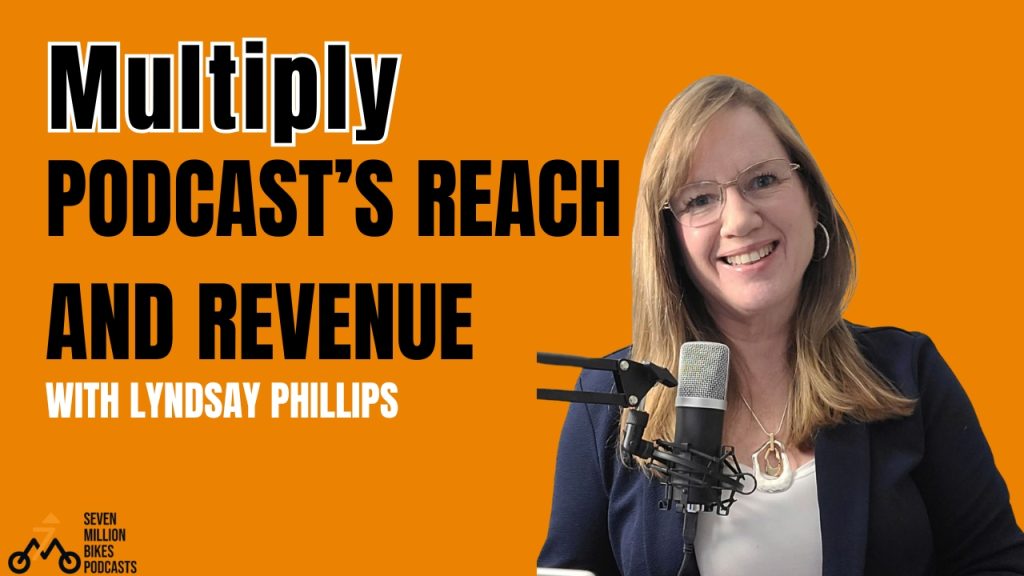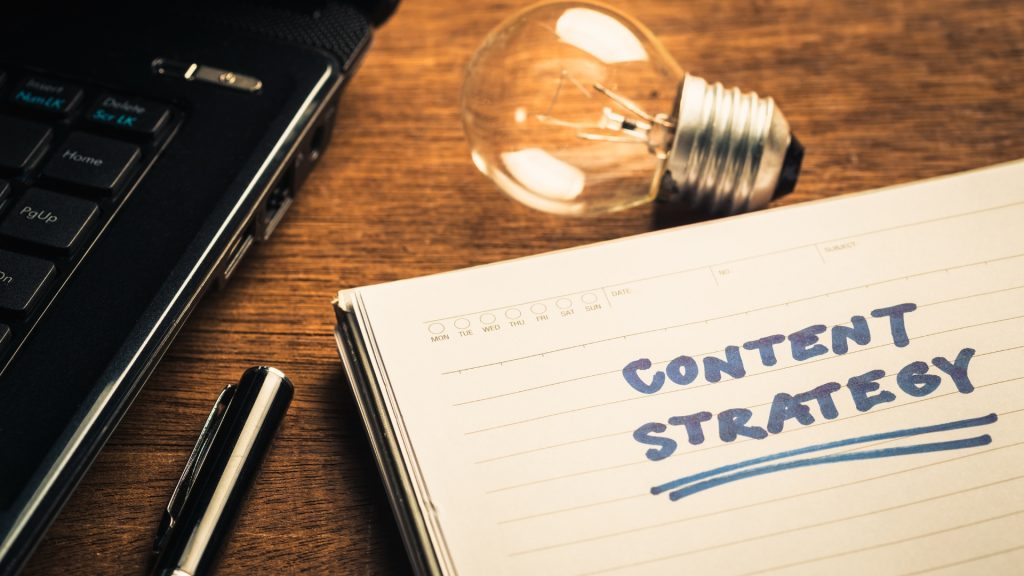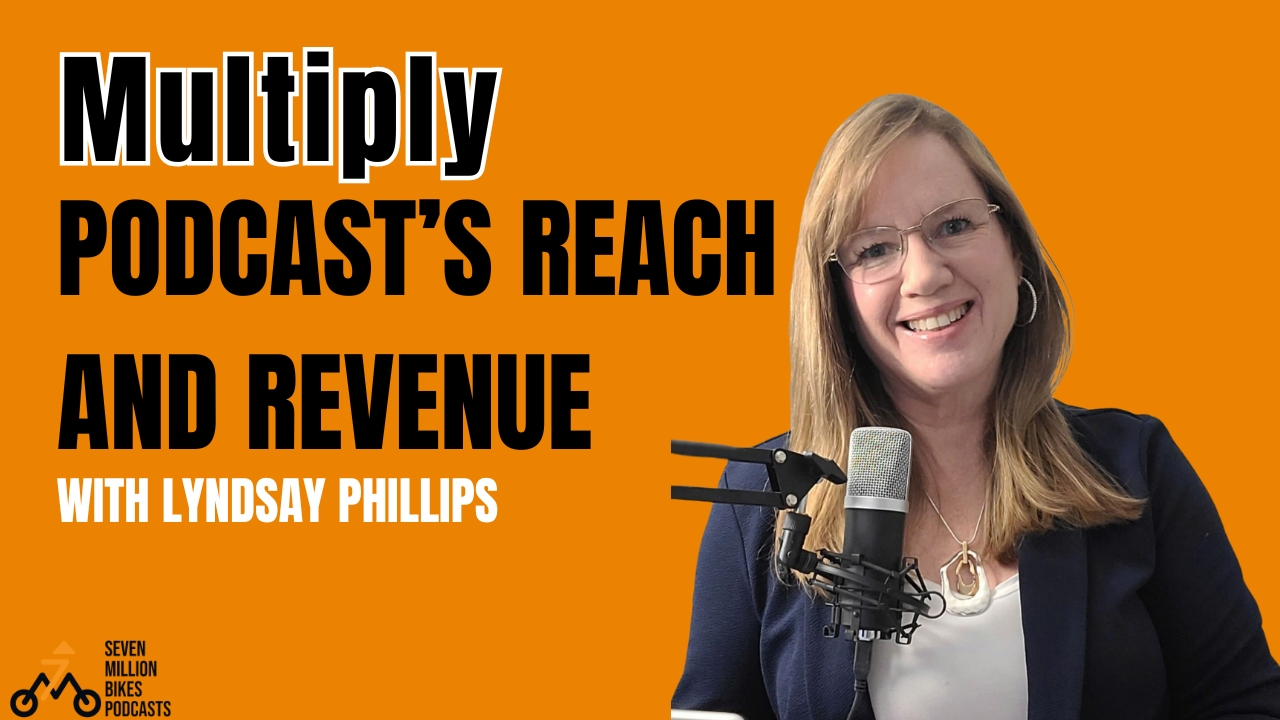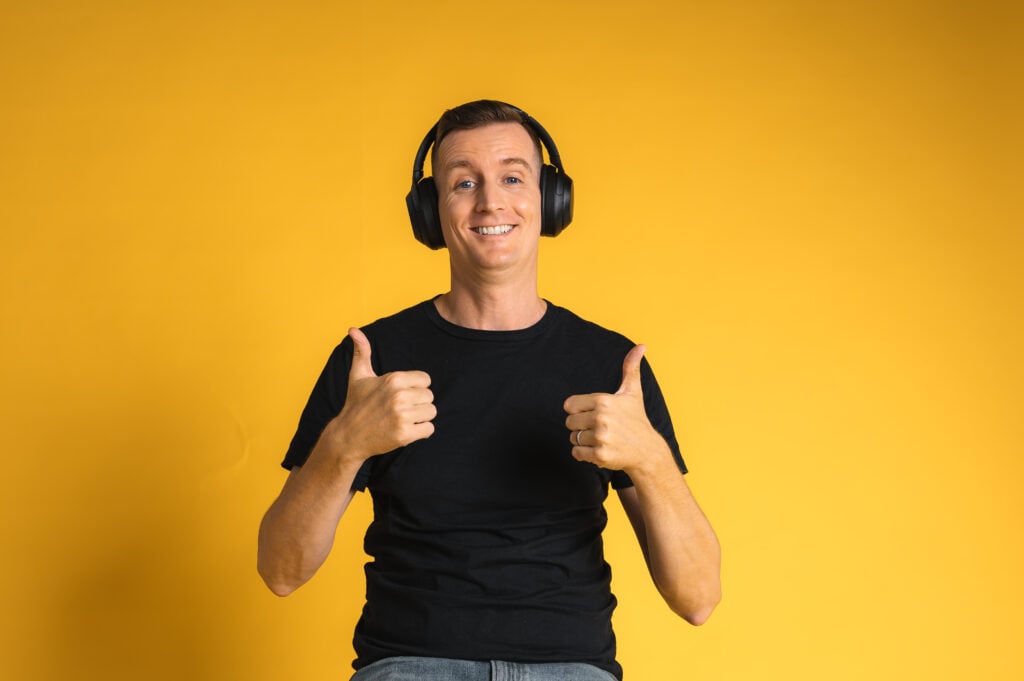How to Multiply Your Podcast’s Reach and Revenue
My name is Niall Mackay, founder of Seven Million Bikes Podcasts. We have produced over 700 episodes, collaborated with more than 50 podcasts, and helped several of them climb to the top of the Apple Podcast charts. We provide podcasting services and our mission is to create impactful stories to inspire the world.
In this interview, I had the pleasure of speaking with Lyndsay Phillips, CEO of Smooth Business Podcasting. Lyndsay is a true expert in her field, helping podcasters and business owners repurpose their content to amplify their reach and build authority.

Our conversation was packed with insights, and one point stood out early on: the incredible impact of repurposing content and find out How to Multiply Your Podcast’s Reach and Revenue.
Repurposing Content to Maximize Podcast Reach
As a podcaster, I’m always fascinated by how we can take a single piece of content and extend its reach far beyond its initial audience. In one of my episodes, I learned just how transformative repurposing content can be. One episode we repurposed achieved an astonishing 50x increase in reach f simply by repurposing it effectively. That insight reaffirmed what I’ve always believed: leveraging content across multiple platforms is not just smart—it’s essential.
stressed that podcasters often don’t realize the potential locked within their episodes. Instead of only publishing an audio file and leaving it at that, she recommends creating a plan to extract every ounce of value from the content. At Seven Million Bikes Podcasts, we strive to follow this principle. Instead of creating disparate pieces of content for blogs, videos, and social media, why not focus on doing one thing exceptionally well and then repurpose it strategically? This approach doesn’t just save time—it ensures every piece of content we create works harder and reaches farther.
For example, starting with a video is a game-changer. It does require some upfront effort, but the returns are undeniable. A single podcast recording can be transformed into multiple formats:
- A transcript becomes a blog post, optimized for SEO and filled with clickable podcast buttons.
- The video is published on YouTube, another search-friendly platform.
- Snippets of the video can then be used to create short-form content like Reels, YouTube Shorts, and for Instagram or LinkedIn.
This method has been instrumental in amplifying a podcast’s visibility. Short-form content, in particular, grabs attention in ways that a full-length episode often can’t. By showcasing key moments from an episode, you entice new audiences to dive into your longer content.

Read more to see how we can repurpose content effectively with podcast: How To Repurpose Podcast Content: 7 Strategies to Expand Your Audience
Content is King, But Strategy is Crucial
We also discussed the famous phrase “content is king.” Lyndsay admitted that while the saying might be overused, it’s still relevant. “Content is how you attract prospects, expand your reach, and showcase your expertise,” she said. But she added an important caveat: strategy is just as important as the content itself.
The key takeaway is:
“You don’t need to kill yourself trying to do blogs, videos, live streams, and podcasts all at once,” she explained. “Focus on doing one thing really well, then strategically repurpose that content to maximize your visibility.”
When you break it down, leveraging different formats—audio, video, and written content—caters to your audience’s diverse preferences. Some people love to listen while driving, others prefer to watch videos, and some just want to skim through a blog. Offering multiple formats ensures you reach people wherever they are, in the way they like to consume information.
Moreover, having your podcast content in varied forms adds authority to your brand. Imagine applying to speak at an event or pitching yourself as a guest for another podcast. When potential collaborators visit your website, they see blog posts, embedded videos, and polished podcast episodes. It’s a living portfolio that shows you “walk the walk” and “talk the talk.”
At one point, I shared a story about someone who created short-form videos designed to look like they were a guest on the Joe Rogan Experience, despite never appearing on the show. Lyndsay was shocked and called it “crazy,” but she acknowledged why people might be tempted to do it. “Being a guest on a respected podcast gives you instant credibility,” she said. However, she emphasized the value of building authentic authority through real appearances, solid content, and consistent effort.
Related Post: How To Plan An Effective Strategy – A Talk With Podcast Strategist Charlotte Lewis-West
The Steps to Repurposing Podcast Content
Lyndsay Phillips broke down the steps for effectively repurposing podcast content to maximize reach and engagement.
Step 1: Optimize for YouTube
The first step after recording an episode is to prepare the content for YouTube. Lyndsay highlighted the importance of video in today’s content landscape:
- Adjust Titles: Sometimes a podcast title may need slight tweaking to align better with YouTube’s search algorithms.
- Optimize Keywords and Tags: Add relevant keywords and tags to ensure the video is searchable on both Google and YouTube.
- Video Format Preferred: While many podcasters opt to upload audio-only content, Lyndsay emphasized that video creates a stronger connection with viewers and is her personal preference for consuming podcasts.
Let’s see How YouTube Transforms Your Podcast’s Reach
Step 2: Create a Blog Post with Embedded Content
Lyndsay explained that turning the podcast into a blog post is crucial for reaching audiences who prefer to read. The blog post should:
- Include the transcript of the episode or a summary of key points.
- Embed the YouTube video and the audio player for accessibility.
- Be optimized for SEO, drawing in organic traffic and leading readers back to your podcast.

Step 3: Leverage Email Marketing
Surprisingly, many podcasters don’t notify their email lists when a new episode is live. Lyndsay stressed the importance of sending an email (or two) to nurture your audience:
- The email can introduce the episode, provide a brief summary, and include links to listen or watch.
- This keeps your audience engaged and ensures your loyal listeners never miss an episode.
While I admitted during our chat that I don’t currently have an email list, it’s something I plan to prioritize in 2025 after hearing Lyndsay’s advice.
Step 4: Create Social Media Assets
This is where the magic of repurposing really shines. Lyndsay outlined how to slice and dice an episode into various forms of short-form content:
- Reels and Shorts: These are essential for platforms like Instagram, YouTube Shorts, and TikTok. Highlight key moments or powerful quotes to grab attention.
- Carousels: For solo episodes, create swipeable Instagram or LinkedIn carousels that summarize key points in a visually engaging way. Lyndsay described these as “mini-books” that audiences can quickly consume, complete with a call-to-action at the end.
- Quotes and Graphics: Pull impactful quotes from the episode and turn them into shareable graphics.
- LinkedIn Articles: Expand on a topic from the episode and post it as a professional article to grow authority on LinkedIn.
Step 5: Share Assets with Guests
For episodes with guests, providing them with promotional materials is crucial. Lyndsay explained that when guests share your content, it introduces the episode to their audience as well. This multiplies the reach exponentially:
- Reels and Shorts: Provide short-form video clips for guests to post on their platforms.
- Social Media Graphics: Include pre-designed graphics with quotes or images.
- Customized Copy: Write social media captions that guests can use, making it easy for them to promote the episode.
Platform Strategies for Podcast Promotion
In creating and promoting content, choosing the right platforms is also important because each site offers different features as well as pros and cons. Lyndsay shared valuable insights about leveraging different platforms to maximize podcast visibility and reach. The key takeaway? The choice of platforms depends on your audience.
Lyndsay emphasized the importance of understanding your target audience, or “avatar,” before deciding where to focus your efforts. Each platform serves a unique purpose:
- LinkedIn: A powerhouse for B2B audiences, Lyndsay has seen tremendous engagement and results here. She described LinkedIn as a platform that “gives back tenfold” for the effort you put in.
- Instagram: With its combination of posts, Reels, and Stories, Instagram is excellent for visual storytelling and personal branding.
- YouTube Shorts: Perfect for short, engaging video clips that can expand your reach to a new audience.
- Facebook: While its effectiveness has waned for some businesses, Lyndsay still sees it as a necessary presence, especially since it integrates seamlessly with Instagram through Meta.
- TikTok and Pinterest: These platforms are niche but can be highly effective for specific demographics or industries.
One crucial piece of advice Lyndsay gave was to avoid spreading yourself too thin. Instead, focus on the platforms where your ideal audience is most active.

Facebook: A Divided Opinion
We touched on Facebook’s diminishing appeal as a business tool. While Lyndsay acknowledged the challenges, such as declining organic reach and increasing ad costs, she pointed out that some people are still “crushing it” on the platform.
I shared my own perspective, noting that Facebook isn’t ideal for podcast promotion due to its algorithm changes and the behavior shift of its user base. Lyndsay agreed that platforms like Spotify are more suited for podcast advertising because they target people who are already familiar with the medium.
The Importance of Guest Assets and Collaboration
One of the most actionable takeaways from our conversation was Lyndsay’s approach to guest collaboration. When you feature guests on your podcast, it’s essential to provide them with promotional assets to make sharing seamless and enticing.
Follow these steps:
- Set Expectations Early: When guests book an appearance, they’re asked if they’ll agree to promote the episode. This sets the tone for collaboration.
- Provide Ready-to-Use Assets: Lyndsay’s team creates branded assets for guests, including social media posts, video clips, and links. Everything is uploaded to a Google Drive for easy access.
- Follow Up: Guests are reminded via email to share the content. A follow-up email ensures they receive the materials and encourages them to post.
One of the valuable tips for creating a seamless procedure is to set up streamlined systems. Lyndsay explained how her team integrates project management tools to create a rinse-and-repeat process for content creation, guest promotion, and platform-specific posting.
I shared a personal anecdote about setting up an automated system for client podcast bookings. It took two days to figure out, but once implemented, it saved countless hours. Lyndsay summed it up perfectly: “Short-term pain for long-term gain.”
Conclusion
My conversation with Lyndsay left me inspired and equipped with actionable strategies to elevate podcast promotion. Whether it’s leveraging LinkedIn, creating guest assets, or optimizing systems, her advice is rooted in years of experience and success.
If you’re ready to take your podcast to the next level, start by identifying the platforms your audience loves and implementing systems that make your workflow seamless. And remember, collaboration with guests is a powerful way to amplify your reach.
Don’t forget to engage with your audience and turn them into loyal customers.


